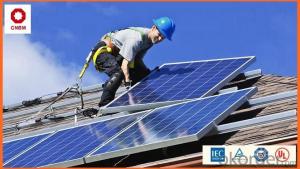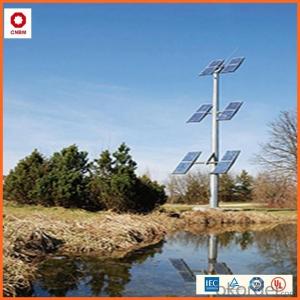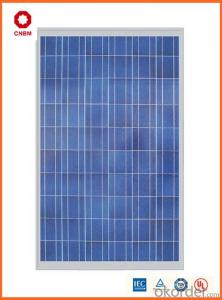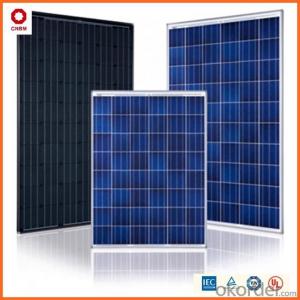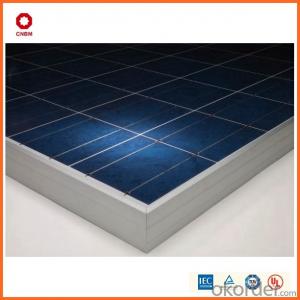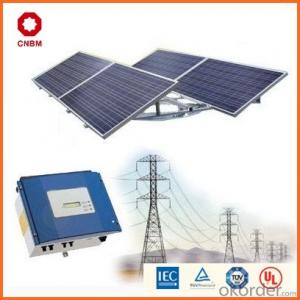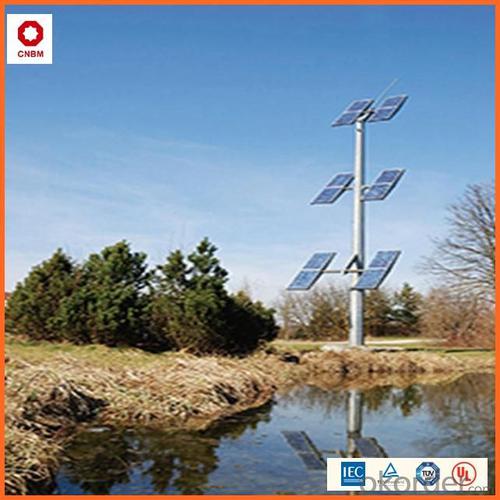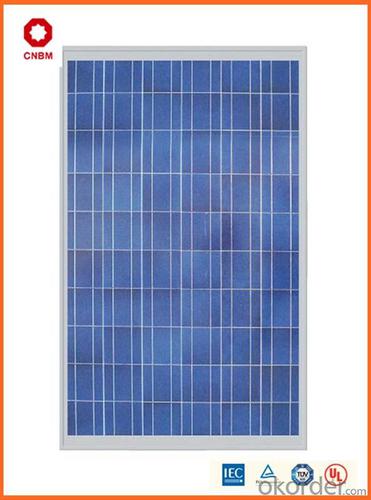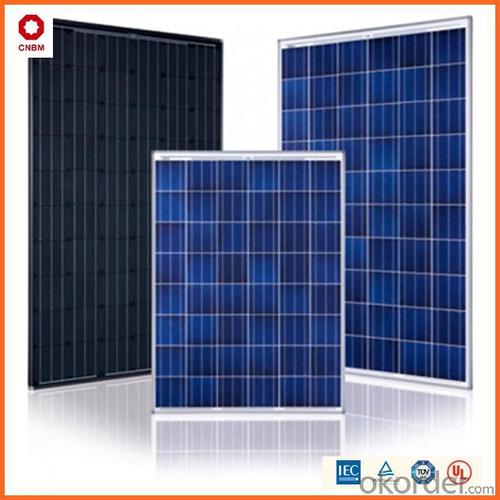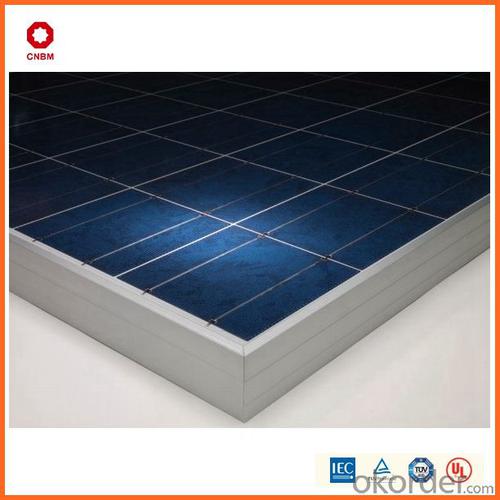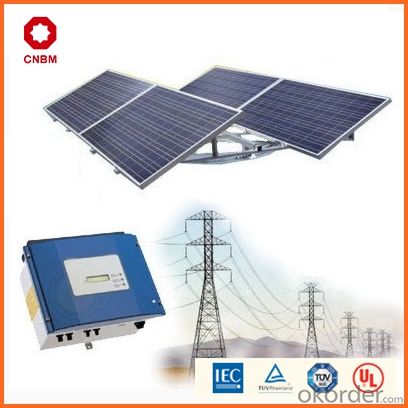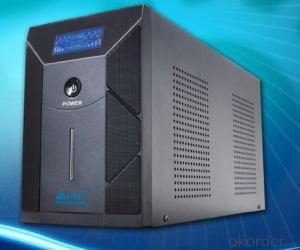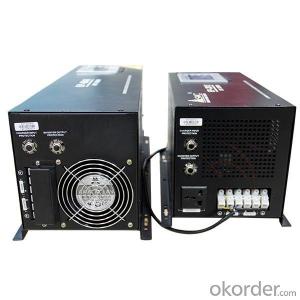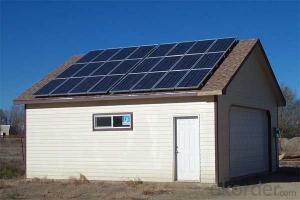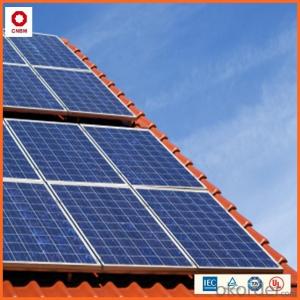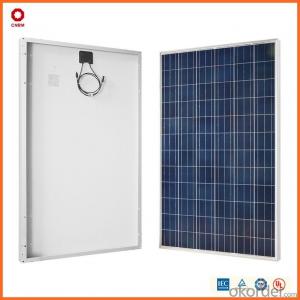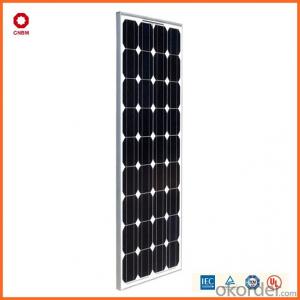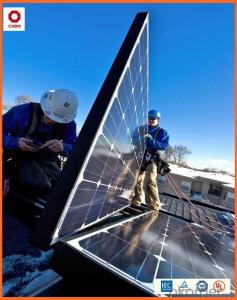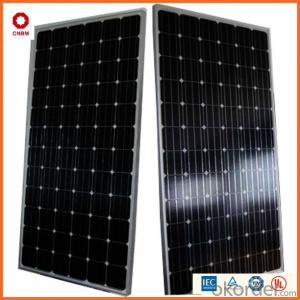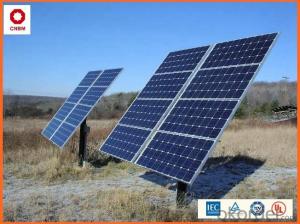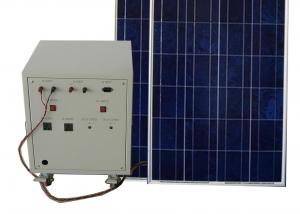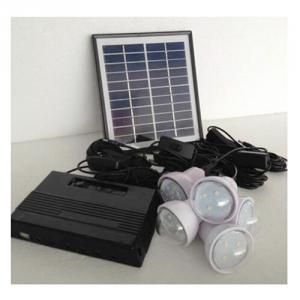40w Small Solar Panels in Stock - Solar Energy Systems New Jersey - China Manufacturer
- Loading Port:
- China main port
- Payment Terms:
- TT OR LC
- Min Order Qty:
- 1 watt
- Supply Capability:
- 10000000 watt/month
OKorder Service Pledge
OKorder Financial Service
You Might Also Like
Specification
Product Description:
Hot Sale !!! Quality and Safety of Small Poly Solar Panel 5w~150w
1. Rigorous quality control meets the highest international standards.
2. High-transmissivity low-iron tempered glass, strong aluminium frame.
3. Using UV-resistant silicon.
4. IS09001/14001/CE/TUV/UL
Warranties of Small Poly Solar Panel 35~85w
1. 10 years limited product warranty
2. 15 years at 90% of the minimal rated power output
3. 25 years at 80% of the minimal rated power output
Specification
Characteristics of Poly solar panels CNBM (245-320W) | |||||
Max Power Voltage Vmp(V) | 30.3 | 30.8 | 31.1 | 31.4 | 31.85 |
Max Power Current Imp(A) | 7.60 | 7.64 | 7.73 | 7.81 | 7.85 |
Open Circuit Voltage Voc(V) | 36.1 | 36.6 | 37 | 37.3 | 37.68 |
Short Circuit Current Isc(A) | 8.50 | 8.55 | 8.65 | 8.75 | 8.85 |
Max Power Pm(W) | 230W | 235W | 240W | 245W | 250W |
Temperature Coefficient of Cells Poly solar panels CNBM (245-320W) | |
NOCT | 45± 2 |
Temperature Coeffucients of Isc | 0.0492 |
Temperature Coeffucients of Voc | -0.3374 |
Temperature Coeffucients of Voc | -0.4677 |
Mechanical Data of Poly solar panels CNBM (245-320W) | |
Dimension | 1638 × 982 × 40 mm |
Weight | 19.5 kg |
No. of Cells and Connections | 60 (6 ×10) |
Tolerance | 0 ~ + 5 W |
Cell | Monocrystalline Cell 156 × 156 mm |
Packing | 624 Pcs/40ft(H) Container |
Limits of Poly solar panels CNBM (245-320W) | |
Operating Temperature | -40 to +85 |
Storage Temperature | -40 to +85 |
Max System Voltage | 1000VDC(IEC) / 600VDC(UL) |
Features of our products:
• High conversion efficiency mono/poly-crystalline amorphous silicon solar cells
• Modules incorporate high performance bypass diodes to minimize the power drop caused by shading
• High transmittance, low-iron tempered glass
• High performance EVA encapsulant to prevent destroying and water.
• AI frame: without screw, corner connection. 8 holes on the frame can be installed easily
• Good performance of preventing from atrocious weather such as wind and hails
• Certifications: CE IEC TUV VDE UL, Class I
• 10 years 90% power output warranty
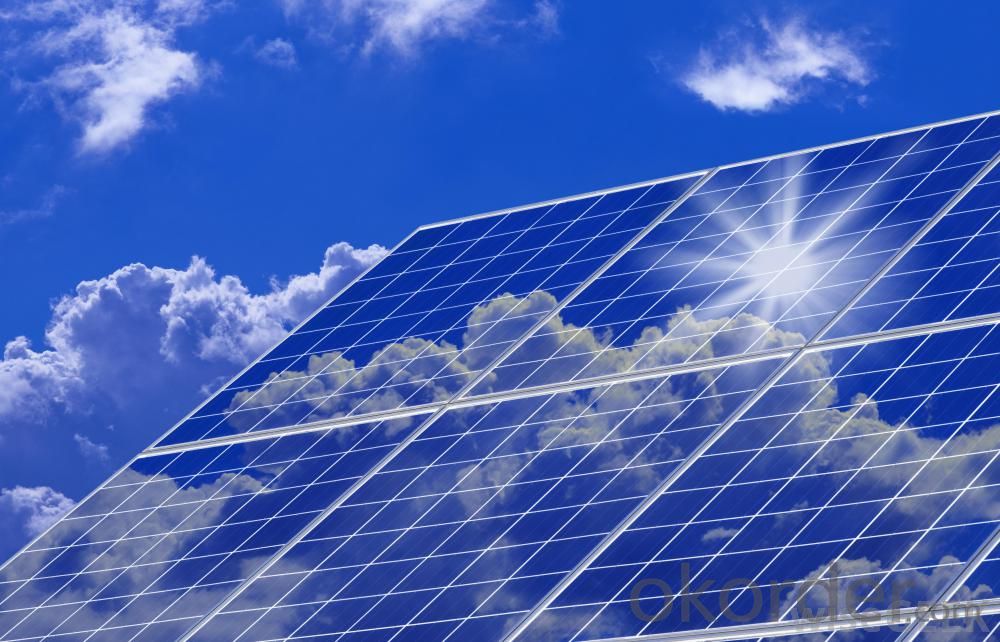
Shipping of Small Poly Solar Panel 35~85w
By Sea | Delivery from Shanghai or Ningbo seaport |
By Air | Departure from Shanghai Pudong Airport |
By Express | Post by DHL, EMS, UPS, TNT. |
Features of our products:
• High conversion efficiency mono/poly-crystalline amorphous silicon solar cells
• Modules incorporate high performance bypass diodes to minimize the power drop caused by shading
• High transmittance, low-iron tempered glass
• High performance EVA encapsulant to prevent destroying and water.
• AI frame: without screw, corner connection. 8 holes on the frame can be installed easily
• Good performance of preventing from atrocious weather such as wind and hails
• Certifications: CE IEC TUV VDE UL, Class I
• 10 years 90% power output warranty
As a professional Solar Panel manufacturer and Supplier in China, we have our customers come around the whole world and our specialization has got a worldwide recognition. Meanwhile, with our superior quality, competitive price, prompt and excellent service, As main role in trade section of CNBM Group, CNBM International Corporation supplies products including Monocrystalline Solar Panel, Polycrystalline Solar Panel ( multicrystalline silicon Solar Panel) have received and enjoyed famous reputation in many countries and regions in the world.
- Q: Can solar energy systems be used in powering data centers?
- Yes, solar energy systems can be used to power data centers. Solar panels can be installed on the rooftops or in nearby areas to generate electricity from sunlight, which can then be used to power the data center's operations. This renewable energy source not only reduces reliance on fossil fuels but also helps in reducing carbon emissions, making it an environmentally friendly option for powering data centers.
- Q: Can solar energy systems be used in powering community centers or social organizations?
- Yes, solar energy systems can certainly be used to power community centers or social organizations. Solar panels can be installed on the rooftops of these buildings to harness sunlight and convert it into electricity. This renewable energy source can help reduce electricity costs and dependence on traditional energy sources, making it an environmentally friendly and sustainable option for powering community centers and social organizations. Additionally, solar energy systems can also contribute to raising awareness about renewable energy and inspire others in the community to adopt clean energy practices.
- Q: What is the future of solar energy technology?
- The future of solar energy technology looks promising. With advancements in efficiency and cost reduction, solar power is expected to play an increasingly significant role in our energy mix. Continued research and development will likely lead to innovative solutions such as solar panels integrated into building materials and more efficient energy storage systems. Additionally, the integration of solar power with emerging technologies like artificial intelligence and Internet of Things can further enhance its potential. As the world transitions towards cleaner and renewable energy sources, solar energy technology is expected to continue its growth trajectory and contribute significantly to a sustainable and greener future.
- Q: Can solar energy systems be used for powering hotels or resorts?
- Hotels and resorts can definitely utilize solar energy systems to power their operations. These systems have the ability to convert sunlight into usable energy, producing electricity that can be used for various purposes. Installing solar panels on the roofs or suitable areas of these establishments enables the generation of clean and sustainable energy. By harnessing solar power, hotels and resorts can decrease their reliance on traditional electricity sources, which often come from non-renewable resources. This offers a greener alternative, helping these establishments reduce their carbon footprint and contribute to a more sustainable future. Additionally, hotels and resorts often have ample surface areas that are suitable for solar panel installations. This makes them an ideal location for generating solar power, as the large rooftop spaces and open areas can accommodate a significant number of solar panels, thus increasing the electricity generation capacity. Solar energy systems can power various aspects of hotels and resorts, such as lighting, heating, cooling, and even electric vehicle charging stations. Some establishments may even generate excess energy, which can be fed back into the power grid and generate revenue through net metering or feed-in tariffs. In addition to the environmental benefits, solar power can also provide economic advantages for hotels and resorts. Although the initial cost of installing solar panels may be high, the long-term savings on electricity bills can be substantial. Over time, the investment in solar energy systems pays off, leading to lower operational costs and increased profitability. Moreover, integrating solar power into hotels and resorts can enhance their brand image and attract environmentally conscious customers. Many travelers today prioritize sustainable and eco-friendly accommodations, and offering solar-powered facilities can serve as a significant selling point. In conclusion, solar energy systems can effectively power hotels or resorts. By embracing solar power, these establishments can reduce their environmental impact, save on energy costs, and appeal to eco-conscious customers.
- Q: Can solar energy systems be used in areas prone to earthquakes?
- Yes, solar energy systems can be used in areas prone to earthquakes. While earthquakes can pose a risk to any infrastructure, including solar panels, proper design and installation can mitigate potential damage. Reinforced mounting structures and flexible connectors can help absorb vibrations and prevent panels from dislodging. Additionally, solar energy systems are decentralized, meaning that even if some panels are affected by an earthquake, the rest of the system can continue to operate. Overall, with careful planning and engineering, solar energy systems can be used effectively in earthquake-prone areas.
- Q: How do solar energy systems contribute to reducing greenhouse gas emissions?
- Solar energy systems contribute to reducing greenhouse gas emissions by harnessing the power of the sun to generate electricity without burning fossil fuels. This clean and renewable energy source helps to replace traditional methods of electricity generation, such as coal-fired power plants, which emit vast amounts of greenhouse gases like carbon dioxide into the atmosphere. By utilizing solar energy, we can reduce our dependency on fossil fuels and mitigate climate change by minimizing the release of harmful greenhouse gases.
- Q: Can solar energy systems be used for powering off-grid research facilities?
- Yes, solar energy systems can be used very effectively for powering off-grid research facilities. Solar panels can generate electricity from sunlight, which can then be stored in batteries for use during times when the sun is not shining. This allows research facilities located in remote or off-grid areas to have a reliable and sustainable source of power, reducing or eliminating the need for traditional grid-based electricity. Additionally, solar energy systems are environmentally friendly and have minimal maintenance requirements, making them a viable and cost-effective solution for off-grid research facilities.
- Q: What are the main components of a solar energy system?
- The main components of a solar energy system include solar panels, an inverter, a battery (optional), and a charge controller.
- Q: Can solar energy systems be used for powering electric vehicle showrooms?
- Yes, solar energy systems can certainly be used for powering electric vehicle showrooms. Solar energy is a clean and renewable source of power that can provide electricity to a wide range of applications, including commercial buildings like showrooms. By installing solar panels on the roof or surrounding areas of the showroom, the energy generated from the sun can be converted into electricity and used to power the showroom's operations, including lighting, air conditioning, charging stations, and other electrical equipment. This not only reduces the reliance on grid electricity but also helps in reducing carbon emissions and promoting sustainability. Additionally, solar energy systems can also provide a cost-effective solution in the long run, as they help in reducing or eliminating electricity bills while providing a reliable and consistent source of power.
- Q: How do solar energy systems impact the electric utility industry?
- Solar energy systems have a significant impact on the electric utility industry by increasing the supply of renewable energy and reducing the reliance on traditional fossil fuels. This shift towards solar power has prompted utilities to adapt their infrastructure and business models to accommodate distributed generation, such as rooftop solar panels. Additionally, the integration of solar energy into the grid has led to increased grid stability and lowered electricity costs for consumers. However, it has also presented challenges for utilities in terms of managing intermittent power generation and ensuring grid reliability. Overall, solar energy systems are reshaping the electric utility industry towards a more sustainable and decentralized future.
Send your message to us
40w Small Solar Panels in Stock - Solar Energy Systems New Jersey - China Manufacturer
- Loading Port:
- China main port
- Payment Terms:
- TT OR LC
- Min Order Qty:
- 1 watt
- Supply Capability:
- 10000000 watt/month
OKorder Service Pledge
OKorder Financial Service
Similar products
Hot products
Hot Searches
Related keywords
